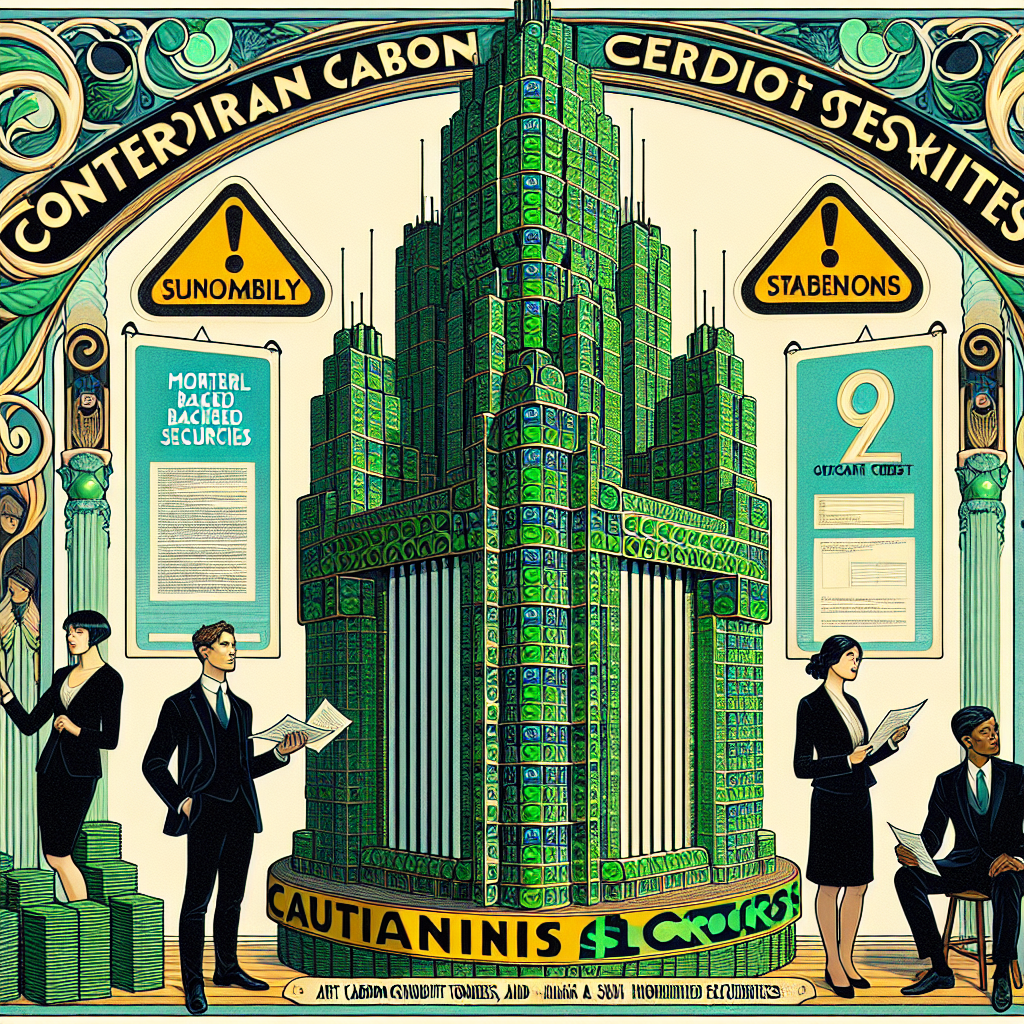The Carbon Credit Bubble: How $2 Trillion in Tokenization Echoes the Mortgage Crisis of 2008

In the elegant world of finance, history doesn't repeat itself, but it often rhymes with remarkable precision. As we watch CarbonHood's ambitious $70 billion carbon credit tokenization initiative with RedBelly Network unfold—aiming for a staggering $2 trillion by the end of 2025—one can't help but notice the uncanny parallels to another financial innovation that once promised to revolutionize markets: mortgage-backed securities (MBS).
And we all remember how splendidly that turned out.
The Green Tower of Babel
CarbonHood, in partnership with RedBelly Network and Blubird, has embarked on tokenizing an initial 950 million tons of carbon credits. This first phase, valued at approximately $70 billion, represents merely the foundation of their ambitious plan to bring a 32 billion ton asset book—valued up to $2 trillion—on-chain within months.
If those numbers sound impressive, they should. They're meant to. But they should also sound alarming.
The project aims to 'revolutionize trust in the carbon credit market by providing a secure, transparent, and reliable platform.' Curiously enough, these were the exact selling points of mortgage-backed securities before 2008: security, transparency, and reliability.
Lessons Apparently Not Learned
The 2008 financial crisis wasn't just a random economic hiccup—it was the direct result of specific structural flaws in how we handled financial innovation. Let's examine the eerie similarities between yesterday's mortgage crisis and today's carbon tokenization boom:
1. Complexity Masking Risk
Then: Mortgage-backed securities bundled thousands of individual mortgages of varying quality into complex instruments that even the experts struggled to value accurately.
Now: Tokenized carbon credits represent environmental projects of wildly varying quality, verification standards, and actual carbon impact—all neatly packaged into seemingly uniform digital assets.
2. Rapid Expansion Outpacing Regulation
Then: The MBS market grew from $685 billion in 2000 to over $2.5 trillion by 2007, far outpacing regulatory frameworks' ability to adapt.
Now: CarbonHood and RedBelly aim to scale from $70 billion to $2 trillion in carbon credit tokenization within months—a growth rate that no regulatory body is equipped to properly oversee.
3. Overreliance on Technology
Then: Banks and investors relied on complex mathematical models that proved catastrophically inadequate when real-world conditions changed.
Now: Blockchain technology is presented as a panacea that will somehow solve all the underlying verification, quality, and valuation issues in carbon markets through the magic of decentralization.
4. False Sense of Liquidity
Then: MBS appeared liquid until suddenly they weren't, leaving institutions holding assets they couldn't sell at any price.
Now: Tokenized carbon credits promise unprecedented liquidity in a market that has historically been illiquid for good reason—proper valuation requires deep due diligence.
But surely we've learned our lesson, right? Apparently not. As Mark Twain never actually said but would have approved of: 'History doesn't repeat itself, but it often rhymes.'
Carbon Markets: Already on Shaky Ground
Before we even add the complexity of tokenization, it's worth noting that carbon markets themselves face significant challenges. The global carbon credit market has remained relatively stagnant, valued at around $1.4 billion in 2024. While retirements of credits have been robust, with 54.56 million credits retired in Q1 2025, the market faces:
- Supply constraints for high-quality credits
- Evolving regulatory frameworks across jurisdictions
- Verification challenges and quality concerns
- Pricing inconsistencies and transparency issues
Adding a layer of tokenization and blockchain doesn't solve these fundamental problems—it potentially obscures them behind a veil of technological sophistication.
The Warning Signs We Should Heed
If we're to avoid repeating the mistakes of 2008, here are the red flags investors and regulators should watch for in the carbon tokenization boom:
1. Disconnection From Underlying Asset Quality
When the price of tokenized carbon credits no longer reflects the quality of the underlying environmental projects, we're in dangerous territory. Watch for carbon tokens trading at values that make no sense compared to the fundamental quality of the projects they represent.
2. Opacity in Verification
If the verification process for carbon projects becomes less transparent as tokenization increases, that's a serious warning sign. Blockchain may record transactions immutably, but it doesn't independently verify that a forest is actually being protected or that emissions are truly being reduced.
3. Regulatory Arbitrage
Watch for companies using tokenization to circumvent existing carbon market regulations or to operate in regulatory gray areas. When financial innovation outpaces regulatory frameworks, the results are rarely positive for market stability.
4. Excessive Leverage
If financial institutions begin using tokenized carbon credits as collateral for loans or other financial products, creating leverage in the system, we're recreating one of the key accelerants of the 2008 crisis.
Because if there's one thing humans truly excel at, it's finding innovative new ways to repeat old mistakes.
A Framework for Responsible Innovation
Rather than simply criticizing, let's offer a constructive path forward. Tokenization of carbon credits could offer genuine benefits if implemented with appropriate safeguards:
- Transparent Quality Tiers: Carbon tokens should clearly indicate the quality tier of the underlying projects, not homogenize different qualities into seemingly identical assets.
- Regulatory Collaboration: Tokenization platforms should work proactively with regulators rather than trying to outpace them.
- Independent Verification: Blockchain recording is only as good as the data being recorded. Independent, rigorous verification of carbon projects must remain a priority.
- Gradual Scaling: Growing from $70 billion to $2 trillion in months should raise eyebrows. Responsible innovation scales at a pace that allows for adaptation and learning.
The Path Forward
As CarbonHood and RedBelly Network forge ahead with their ambitious tokenization plans, investors, regulators, and climate advocates would do well to maintain a healthy skepticism. The promise of revolutionizing carbon markets through blockchain technology is appealing, but so was the promise of democratizing home ownership through innovative mortgage products.
We know how that story ended. Let's ensure this one has a different conclusion.
After all, in the immortal words of economist John Kenneth Galbraith, 'The financial memory is very short.' Perhaps it's time we exercised ours before jumping headlong into the next financial innovation that promises to change everything while ignoring the fundamental lessons of the past.
Because the only thing growing faster than tokenized carbon credits might be our collective amnesia about what happens when financial innovation outpaces our understanding of its risks.




